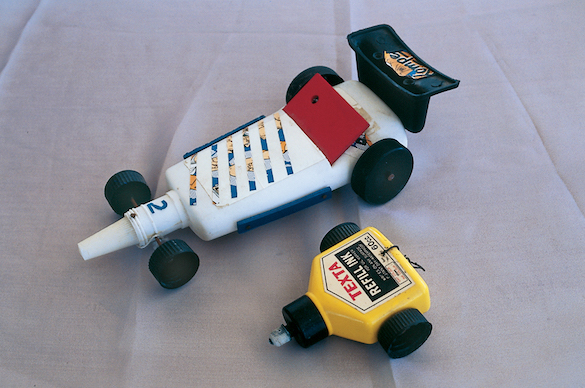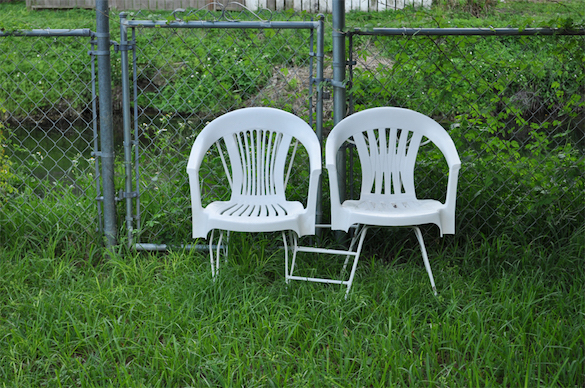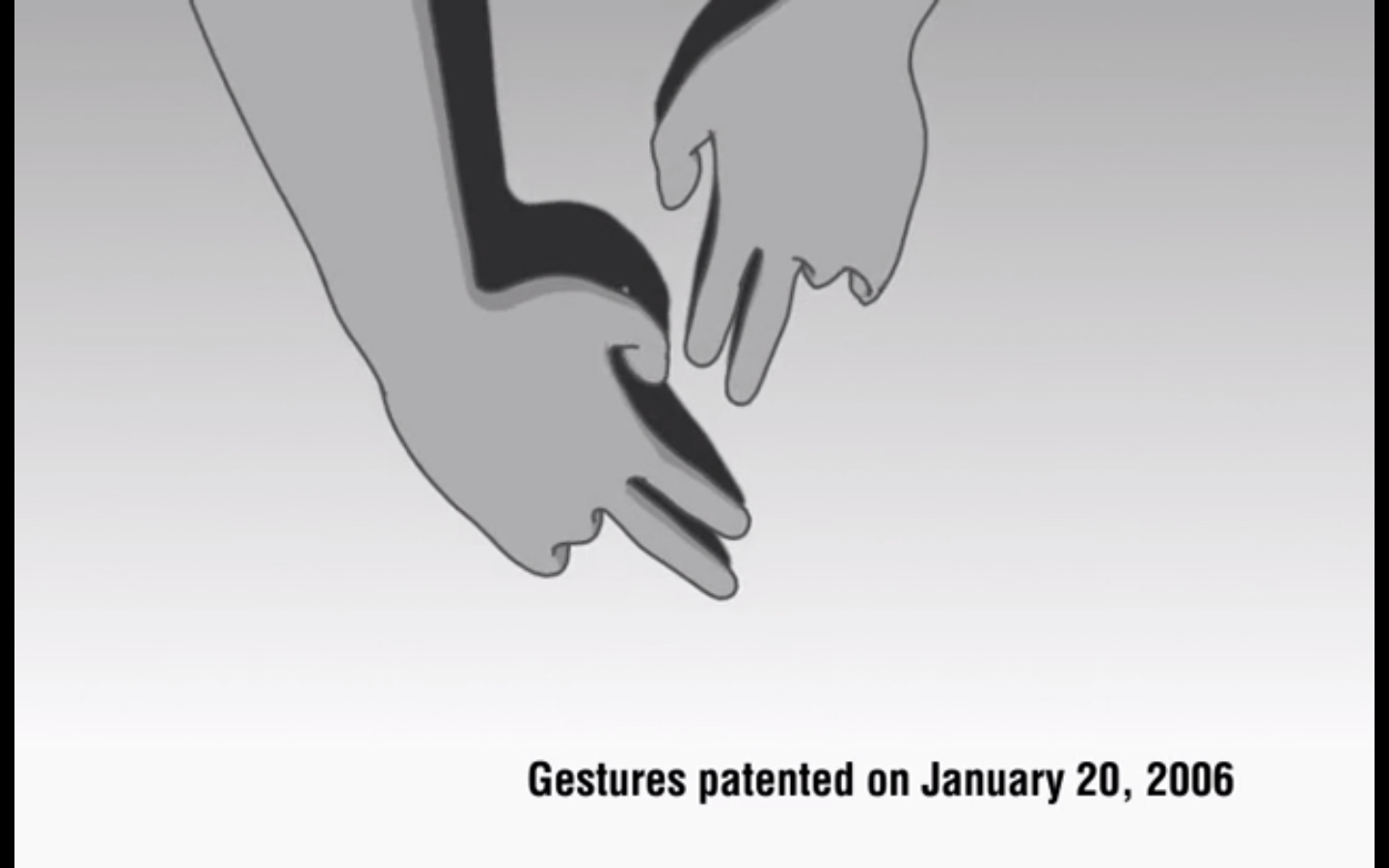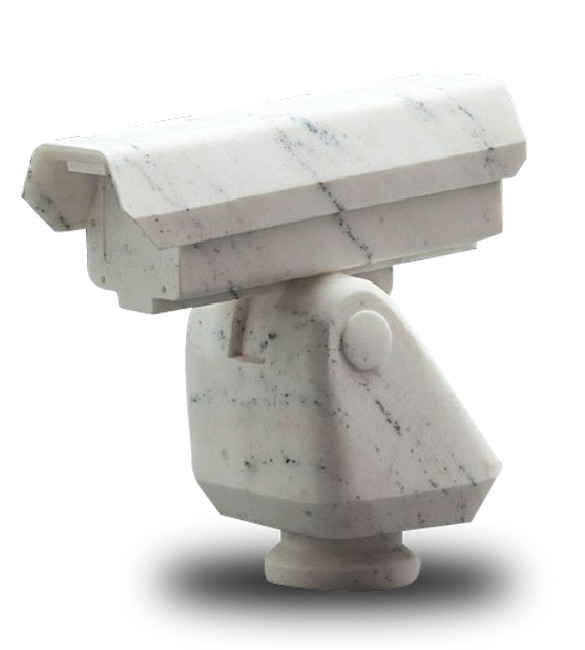Nicolas Maigret

Somewhere between technocracy and technocriticism, technopositivism and technophobia, and technoscientific communication and machinic fetishism, the apparently more neutral alternative, which holds that technology comes down to what you do with it—starting from the principle that technology is never criticized per se, it is the uses made of it that come under fire—, is obviously not as neutral as all that, quite to the contrary. According to Wikipedia, which it seems relevant to quote here: “William Henry Smyth, a Californian engineer, is usually credited with inventing the word ‘technocracy’ in 1919 to describe ‘the rule of the people made effective through the agency of their servants, the scientists and engineers’”. Almost a century later, what has happened to this power of a people drowning in an abundance of technical goods which they have never particularly wanted? (You can’t always want what you get, as the physicist and philosopher Etienne Klein sums things up, paraphrasing the Rolling Stones). Or how to come to terms with the “propaganda of innovation” that people are experiencing in Paris and Melanesia alike?
While Morehshin Allahyari and Daniel Rourke, who are behind #Additivism, postulate in their manifesto that “there is nothing which our infatuated race would desire to see more than the fertile union between a man and an Analytical Engine”, Ernesto Oroza notes that there is a “technological disobedience” at work, at the very same time as Ewen Chardronnet and Bureau d’études are imagining an “alien capitalism”—the final stage of digital serfdom? Taking a look at various “alternovation” strategies, we discuss the usefulness of art (what else?) or, in any event, art’s possibility of shifting from an apologetic space of technology to a place where it can be debated, with Nicolas Maigret, artist and long-term curator of the Jeu de Paume’s virtual space for the next eighteen months.
The critical stance applied in “Futurs non-conformes” [Non-compliant Futures] came into being in a project which you’ve been involved with for four years now: Disnovation. This daily research is incarnated in the tumblr of the same name which describes itself as “a critical exploration of the mechanics and rhetoric of innovation”. In it we find a collection of press articles which refer, for example, to the need for a code of conduct applying to algorithm programmers, to the cognitive interest of note-taking on paper rather than with a computer, and to climate modification techniques, among many other subjects. Surprisingly, these major societal challenges are still not producing anything more than a relatively faint echo in the art world, properly so-called, even if this world is a keen consumer of technological novelties. By putting yourself in the curator’s position, you who are also an artist, and by mixing, for this first part of your exhibition, both explicitly artistic practices and lines of thinking developed in other spheres (philosophy, information design, analytical literature…), are you not in the process of emphasizing the fact that art circles are somewhat generally lacking in distance and hindsight with regard to the technologies being used in them?
For “Futurs Non-Conformes”, acting as a curator rather than as an artist came quite naturally. In the end of the day, curating is quite like the documentation and research method involved when you create a new piece. Furthermore, for a subject like “the propaganda of innovation”, the curatorial form more broadly serves the purpose of creating areas of doubt and debate.
This online exhibition will be organized in three six-month cycles, and the first cycle, called “mythologies”, tries to lay the foundations for a debate. This in turn steered my choice towards activities taking the shape of collections, archives, archaeologies and compilations. A way of providing tools for re-reading our technological histories and making them more complex. Here there are projects focusing on artificial intelligence,1 global networking,2 the intelligent city,3 patents,4 extreme consumerism,5 and the future of man as a cyborg…6
To get back to the core of your question, “Futurs Non-Conformes” does not actually explore “the art world properly so-called”, and the challenges raised are in effect not very visible at all in an art world which we might call conventional. But radical postures often emerge on the sidelines: if we think back to Dada, Fluxus, Situationism, the tactical media, net art and (h)ac(k)tivism, they’re all phenomena which came to the fore in vague, confused areas. What seems worrying to me, in the end, is above all the fact that techno-critical challenges are as invisible as they are in the political arena, in the broad sense.
I think there’s a need to re-politicize the technological subject on the scale of society.
In artistic domains, this might consist in proposing tools which give rise to debate, perception, understanding and active stances in the face of current technological challenges, as well as vanishing points, and appropriations in the form of hijackings, transformations and perversions of technological innovations.
In the theoretical field, this way of thinking is coming back with a vengeance. In the wake of historical authors, such as Jacques Ellul, Gilbert Simondon, and Paul Virilio, in France, a new generation is coming to grips with contemporary changes, in particular with figures like Antoinette Rouvroy, Matteo Pasquinelli and Evgeny Morozov. And this generation is dealing with predominantly contemporary issues such as digital neo-feudalism (“In feudal times, it was the exploitation of land cultivated by farmers, in the internet age it’s the exploitation of the immaterial spaces cultivated by cultural producers, prosumers and the notorious Free Culture”)7, algorithmic governmentality8 (or how algorithms are an implicit arena of expression for challenges of an ethical, political and legal nature), and techno-solutionism9 (the ideology whereby all problems which can be described can then be solved by technology).
These days, and in my own art praxis, I get the impression that this is no longer a time either for ornament or for distraction, like, for example, the amazement produced by the prowess and magical dimension of new technologies. Nor can I go along with the idea that the artist is a tool for popularizing techno-scientific research. This field seems to me to be increasingly a passive propaganda tool, to some degree at the service of a validation of the consumption/ innovation/ dependency/ obsolescence machine.
What I find extremely interesting, on the other hand, are the rare moments of abuse and perversion of technology, its uses, and its communicational infrastructures. In particular what those moments render perceptible from a domain that is usually opaque and constricted. In this respect, the work and the manifesto of Critical Engineering10 are inspiring. There is also a marked fictional and even poetic potential in these everyday abuses, as recently with TAY,11 that semi-intelligent chatbot prototype which, in just a few days, became the parrot of the obscene and racist language of the Internet users it communicated with.
But there’s a non-high-tech aspect which is just as interesting, especially in very spontaneous forms like examples of disobedience arising out of necessity, including inventions made by prisoners,12 the improvised gambiarra solutions in Brazil,13 and forms of pirating out of necessity which have been explored in The Pirate Book.14 All these issues are also present in the Technological Disobedience15 project which is the brainchild of the Cuban designer and artist Ernesto Oroza, who has, for years, been collecting activities which he calls “technological disobedience”. This is obviously linked with Cuban history and the economic embargo that the island has suffered for several decades, making access to a majority of ordinary tools and technologies impossible. Ernesto Oroza documents and collects the way these objects are replaced by empirical technological practices in the form of DIY inventions.
As possible crises in relation to the propaganda of innovation, you mention “changes and perversions of technological innovations”, and you actually present, in the first cycle of “Futurs non-conformes”, both a project by Ernesto Oroza, connected with what this latter calls “technological disobedience”, and a project by the artist and publisher Peter Moosgaard devoted to the “cargo cult”. While the former strives to reveal Cuban practices for mending and even re-inventing consumer goods, the latter describes that story of consumerist mimicry which appeared in Oceania more than a century ago, and which still sporadically exists in various more overtly critical forms. Is it in this shift from a cult to a counter-culture that, in your view, alternovation, if I may so put it, is being played out?
There’s not really any unique kind of propaganda in regard to technological innovation, but rather ever-changing forms of propaganda. For me, this expression is a way of naming a context in which innovation and technological development have become a central vehicle of the political, economic and industrial system, but also the core of a form of popular western cult.
So strategies putting this “propaganda of innovation” in a state of crisis are also being invented in a very varied, empirical and scattered way. Strategies which you have neatly called alternovations.
On the one hand, there are alternovations resulting from necessity, with alternative technological practices corresponding to imperatives of survival, making do, and replacing inaccessible artefacts (this is so with the Cuban case we’ve just mentioned).
On the other hand, there are political alternovations, with strategic uses of technological possibilities for the purposes of disobedience, dissidence and activism. (This will be the subject of the exhibition’s second cycle).
Then there are alternovations of emancipation, with practices involving the hijacking of initial functions and constraints, and practices involving the appropriation and hybridization of technologies. (This will be the subject of the exhibition’s third cycle).
Last of all, there are cult-oriented alternovations, with practices which shed light on the symbolic and ritual dimension of the individual and collective relations we have with technological artefacts and their consumption. (This is the case with Peter Moosgaard’s Supercargo project).
Let me take advantage of this latter example to go into more detail about the Supercargo research blog. Here, Peter Moosgaard borrows the “cargo cult” notion which came into being from the clash caused by the encounter between aboriginal cultures and western technologies. Some tribes then introduced simulacra of western technical objects into their ritual practices, by using wood and rope to reproduce, for example, airplane cockpits, freighters and weapons. Today, Moosgaard is putting together a collection of objects which come close to these practices in contemporary artistic and popular production. The way I see it, his work is a way of exploring the impact and place of technological artefacts outside their purely practical functions. It also powerfully conjures up what might be an age marked by the post-disaster of hyper-consumerism, in which we would see the emergence of a desire to reproduce artefacts not so much for their practical functions, as for the symbolic and ritual function of lost objects.
As you mention digital neo-feudalism, Morozov’s warhorse, do you think that his suggestion, which at the moment seems crazily utopian, of “using all these sensors, algorithms, databases and real time coordination capacities with a view to providing an actual public service working outside the market system”16 can also be part of this alternovation model?
The idea of a digital neo-feudalism was already developed by Matteo Pasquinelli in the early days of Facebook:17 at that time, he was analyzing the significance of a shift towards a proprietary web 2.0, where the user, “a digital serf”, would become the labour force working on behalf of and for the profit of major proprietors. More recently, in his book The Stack, Benjamin Bratton18 describes and questions the accumulation of technological mediation infrastructures, and a chapter is devoted to neo-feudalism.
Evgeny Morozov extends this line of thinking with a proposal to share tools and infrastructures of public utility. Politicizing the technological question is a central issue at the moment, because, as we mentioned earlier, these essential issues of any contemporary policy are totally missing from the predominant discourse and, as a result, misunderstood.
The major barrier to this type of proposition is that, in order to be operative, they must be if not global, then in any event widespread. And this cohesion of national and even supra-national decisions is currently impossible under a diktat of industrial lobbies. We just have to think back to what happened during attempts to move public services towards free software: in the end, the decision was not adopted in favour of an industrial leader.
These perspectives involving sharing are an extension of the ideal of the factory owned by its own workers, or, on the contrary, in a centralized form: of public service. Among other things, these questions are the subject of the work of Telekommunisten,19 a Berlin-based artists’ collective which is exploring pseudo-fictional scenarios for “venture communism”. Their manifesto, the Telekommunisten Manifesto,20 which will be presented in the second part of the exhibition, rightly deals with these contemporary issues.
To get back to our original subject, at what moment do you think the models of alternovation and dissidence applied by artists—in particular those you work with—become operative, if that is indeed their goal?
I think this is the objective of most of them. But there are many different ways of thinking about how to become operative: from the sabotage21 of the Luddites to the subtle infiltration of the imaginaries of the “Cyborg Manifesto”,22 by way of alternatives that are being so powerfully communicated that they perforce become part of the public debate.23
Here are a few examples of strategies that we’re currently trying to identify and name with the Disnovation Research group. This is a research project that’s currently under way, whose goal is to get us to:
1-Identify moments when historical technological utopias fail, in order to better perceive shifts in progress.
2-Analyze the power wielded by technological innovation and its many different levels of influence on society, practices and the collective imagination.
3-Develop strategies of appropriation, hijacking and corruption of technological infrastructures as a method of personal and collective emancipation (i.e. Satellite voyeurism).24
4-Develop deviant visions of the future operating as generators of doubt, discomfort, and questioning (i.e. Drone-2000).25
5-Develop extreme, perverse and absurd technological speculations as activators of public debates (i.e. Design Fiction).26
6-Develop experimental moments and spaces offering glimpses of emerging concerns, which are not easy to grasp on a purely abstract and discursive level (i.e. Mario de Vega, Dolmen).27
7-Appropriate and divert technological power innovations and structures so as to re-invent diagonal practices, other forms of infrastructures and other power relations (i.e. Superglue, 28 P2P foundation).
8-Disturb technological imaginations so as to introduce new spaces of mental projection, and fallow areas to be occupied (i.e. Telekommunisten).
9-Invade the technological domain with unforeseen affects to contribute to the construction of futures which do not conform with economic-industrial designs (i.e. 3D Additivism).29
10-All sorts of radical interferences tending towards the construction of alternative imaginations of the future, so as not to leave this privilege just in the hands of engineers and political decision-makers.
In quoting this very enlightening text by the architect Jack Self30 about the contemporary conditions of form mentioned by Peter Moosgaard in relation to Supercargo: “Form today has no longevity, and is purely temporal, operative and contingent. […] As a result of ubiquitous telephony and digital media, the physical object is now irrelevant. Consider Amazon, Uber, Airbnb or iTunes (amongst innumerable other communication applications) – there exists a form to each which is peculiar and particular, but which is neither physical or stylistic / aesthetic”, I’d like to broach the issue of the form of these exhibitions, “Futurs non-conformes”, which are thus taking place online. Because your artistic praxis is not solely incarnated in “de-materialized” works, and works that are presented and presentable on the Internet—and even quite to the contrary—, what line of thinking about the exhibition are you developing in this respect? What does the term “virtual space” [i.e. “espace virtuel”, which is the name of the online exhibition space on which occur “Futurs non-conformes”] mean to you?
To take Jack Self’s words a little further, I’d say that the challenges of design in fact no longer have to do with the physical forms of objects, but more with infrastructure; in the actual weave of systems of governance incorporated in the heart of networks architecture, interfaces, and kinds of interaction (human-machine and human-human).31
As far as the exhibition “Futurs Non-Conformes” is concerned, it presents pieces online which are based on documentary and conceptual qualities; they are connected and put in context by way of the virtual space of the Jeu de Paume. This term seems a bit dated these days 😉 —the fact of calling a site a “virtual space”, in contrast with what is actual and physical, has lost its initial obviousness. First and foremost because we have a far better knowledge of the eminently physical and geographical reality of the network infrastructures,32 but also because the web has distinctly changed, in particular towards a centralized infrastructure encouraging live access, with users who have become ubiquitous players.
In the end of the day, the identification of progress with technical advances, just like faith in technology, is a relatively recent conception with regard to history—going back about 150 years—and has never been universally shared, something which we tend to forget today. So what is left of the idea of progress, once relieved of the cult of innovation?
First off, we must single out the idea of progress as improvement, and the ideology of Progress. What is essential in the idea of progress are the criteria which are chosen to be included or excluded, so as to appraise what represents an improvement (improvement for whom, for what period of time, with what human cost, what ecological cost, what geological footprint…).
This is what Ronald Wright postulates with his “progress trap” concept.33 A large number of technical advances may initially seem to be seductive and positive, but when they are analyzed on other temporal and geographical scales, they turn out to be a trap, a disaster or a lifestyle which can’t last. To take things a bit further, we can link up with Nick Bostrom and his concept of “existential risks”.34 According to Bostrom, since the invention of the atom bomb, a new category of risks has been ushered in: it represents a worldwide risk of lethal intensity but, unlike a meteorite possibly falling to earth, these new risks are much more likely. His point is that it’s crucial to analyze, anticipate and avert these risks.
And this brings us last of all to the research journal The Laboratory Planet,35 whose fifth issue—presented in “Futurs Non-Conformes #1”, like Nick Bostrom’s essay—posits the hypothesis of an “alien capitalism”, in particular seeing the destruction of the earth and its future abandonment as a symptom of this “alien” capitalism. Alien here is the one that moves away from its terrestrial origin and becomes something different, offers itself different forms and different futures. This element of man becoming alien is seen from different angles and by different contributors, with in particular the trajectory of human /technology hybridization, man’s cosmic aspirations, and the development of synthetic biology encompassing the design, generation and evolution of alternative forms of life. I think we’ve just taken a good look at the first cycle in this triptych; the second cycle, in November 2016, will extend this research through a series of strategies titled “acting out”.
1 Artificial Fear, Intelligence of Death, Lauren Huret http://www.laurenhuret.com/artificial-fear-intelligence-of-death/
2 World Brain, Stéphane Degoutin and Gwenola Wagon http://worldbrain.arte.tv/
3 SmartCity ABC, Manu Luksch http://smart.cityabc.xyz/
4 What Shall We Do Next?, Julien Prévieux https://vimeo.com/59793317
5 Supercargo, Peter Moosgaard http://cargoclub.tumblr.com/
6 Ewen Chardronnet and Bureau d’études, The Laboratory Planet http://laboratoryplanet.org/en/
7 Matteo Pasquinelli http://matteopasquinelli.com/docs/Pasquinelli_Digital_neofeudalism.pdf
8 Antoinette Rouvroy http://1libertaire.free.fr/GouvernementAlgorithmique01.html
9 Evgeny Morosov http://www.fypeditions.com/resoudre-laberration-du-solutionnisme-technologique-evgeny-morozov/
10 https://criticalengineering.org/
11 http://www.theverge.com/2016/3/24/11297050/tay-microsoft-chatbot-racist
12 http://temporaryservices.org/served/projects-by-name/prisoners-inventions/
13 http://we-make-money-not-art.com/gambiologia/
15 http://www.technologicaldisobedience.com
17 Matteo Pasquineli http://matteopasquinelli.com/docs/Pasquinelli_Digital_neofeudalism.pdf
18 The Stack, the MIT Press https://mitpress.mit.edu/books/stack
19 Telekommunisten http://telekommunisten.net/
20 Telekommunisten Manifesto http://telekommunisten.net/the-telekommunist-manifesto/
21 http://www.editions-perrin.fr/livre/histoire-du-sabotage/9782262035594
22 http://www.cyberfeminisme.org/txt/cyborgmanifesto.htm
23 https://ahprojects.com/projects/cv-dazzle/
24 http://www.wired.com/2007/06/satellite-voyeu/
26 https://mitpress.mit.edu/books/speculative-everything
27 https://vimeo.com/127240820
29 http://additivism.org/manifesto
31 Interface Politics http://www.gredits.org/interfacepolitics/en/call-for-papers-eng/
32 Timo Arnall, Internet Machine http://www.elasticspace.com/2014/05/internet-machine
33 The Progress Trap https://en.wikipedia.org/wiki/Progress_trap
34 Nick Bostrom, “Existential Risks” http://www.nickbostrom.com/existential/risks.html
35 Ewen Chardronnet et Bureau d’études, The Laboratory Planet http://laboratoryplanet.org/en/
Futurs non-conformes, [Non-compliant Futures], #1 Mythologies, April-October 2016, with : Disnovation research group, Ernesto Oroza, Peter Moosgaard, Nick Bostrom, Giorgia Lupi, Bureau d’études & Ewen Chardronnet, Manu Luksch, Julien Prévieux, Stéphane Degoutin & Gwenola Wagon, Lauren Huret. Jeu de Paume Espace virtuel
- From the issue: 78
- Share: ,
- By the same author: Paolo Cirio, Sylvain Darrifourcq, Computer Grrrls, Franz Wanner, Jonas Lund,
Related articles
Céline Poulin
by Andréanne Béguin
Émilie Brout & Maxime Marion
by Ingrid Luquet-Gad
Interview with Warren Neidich
by Yves Citton












